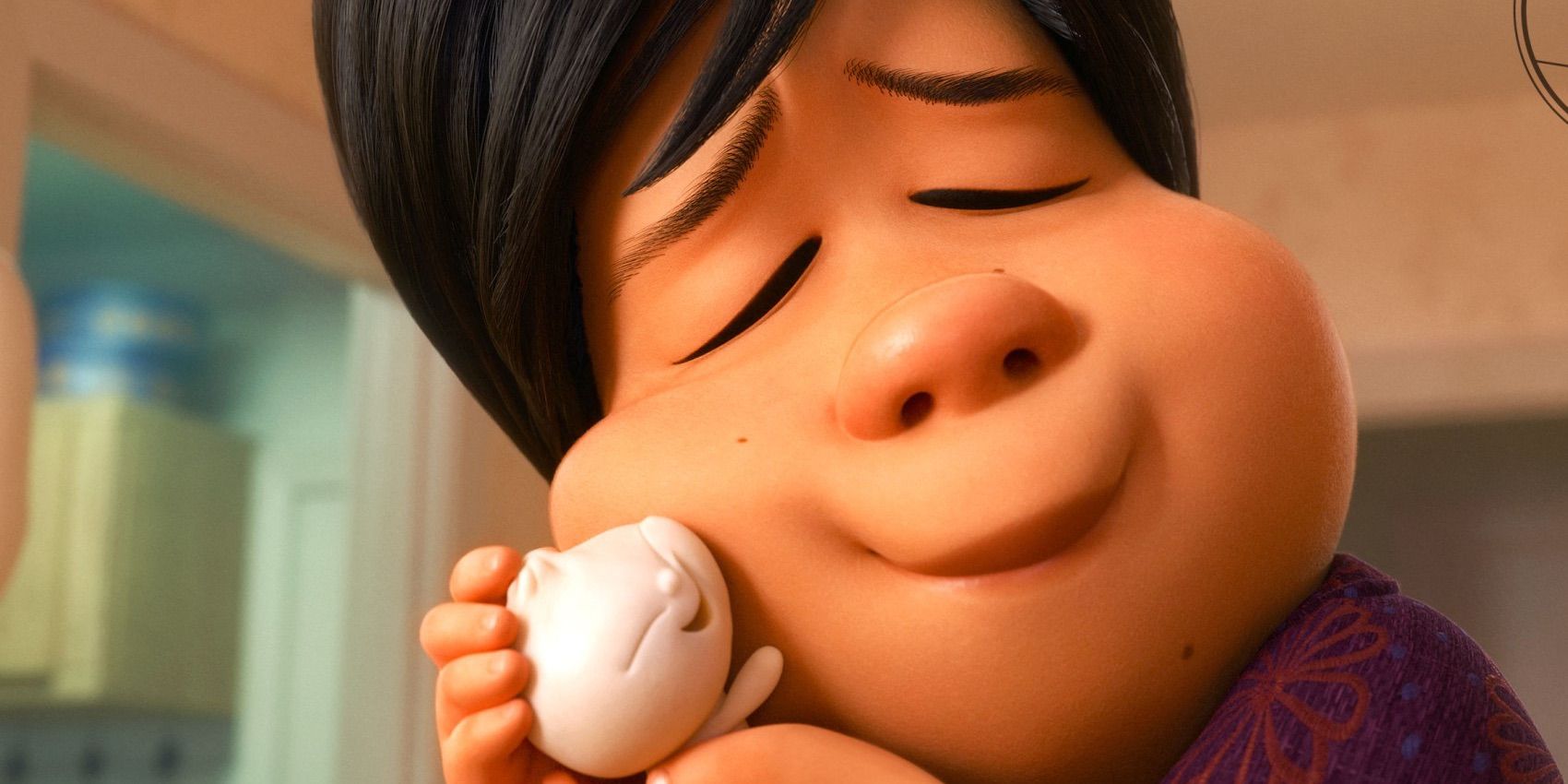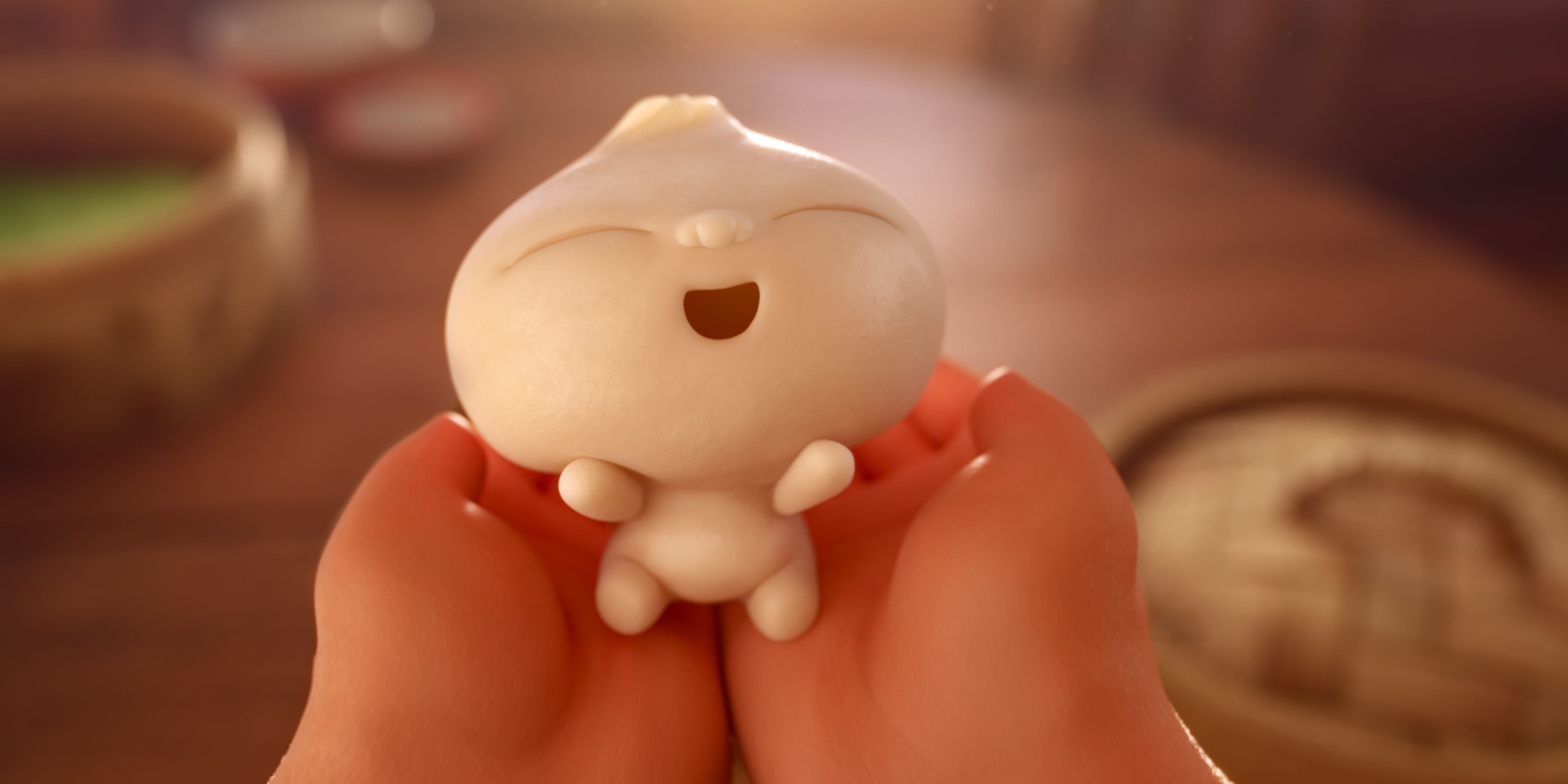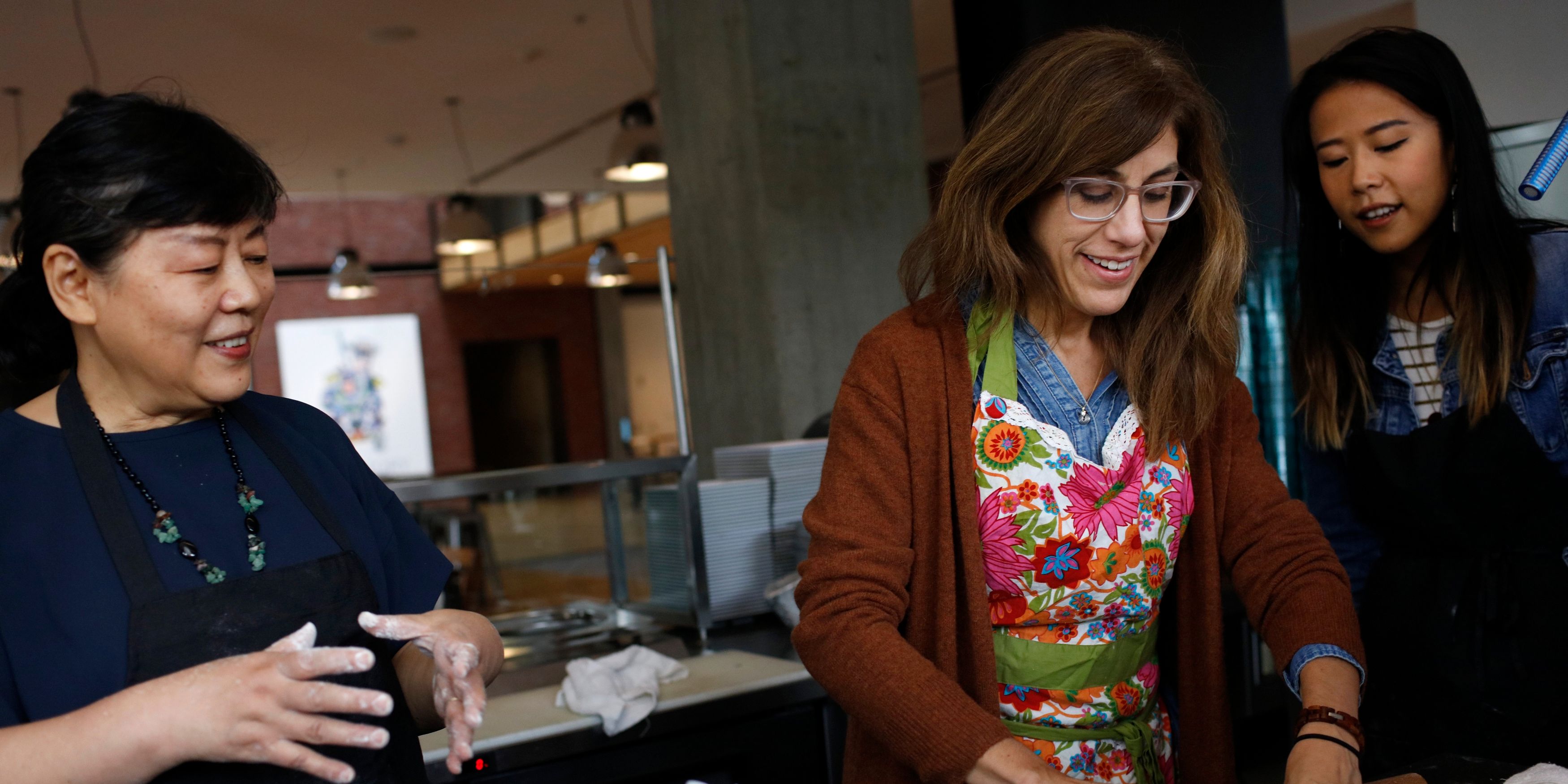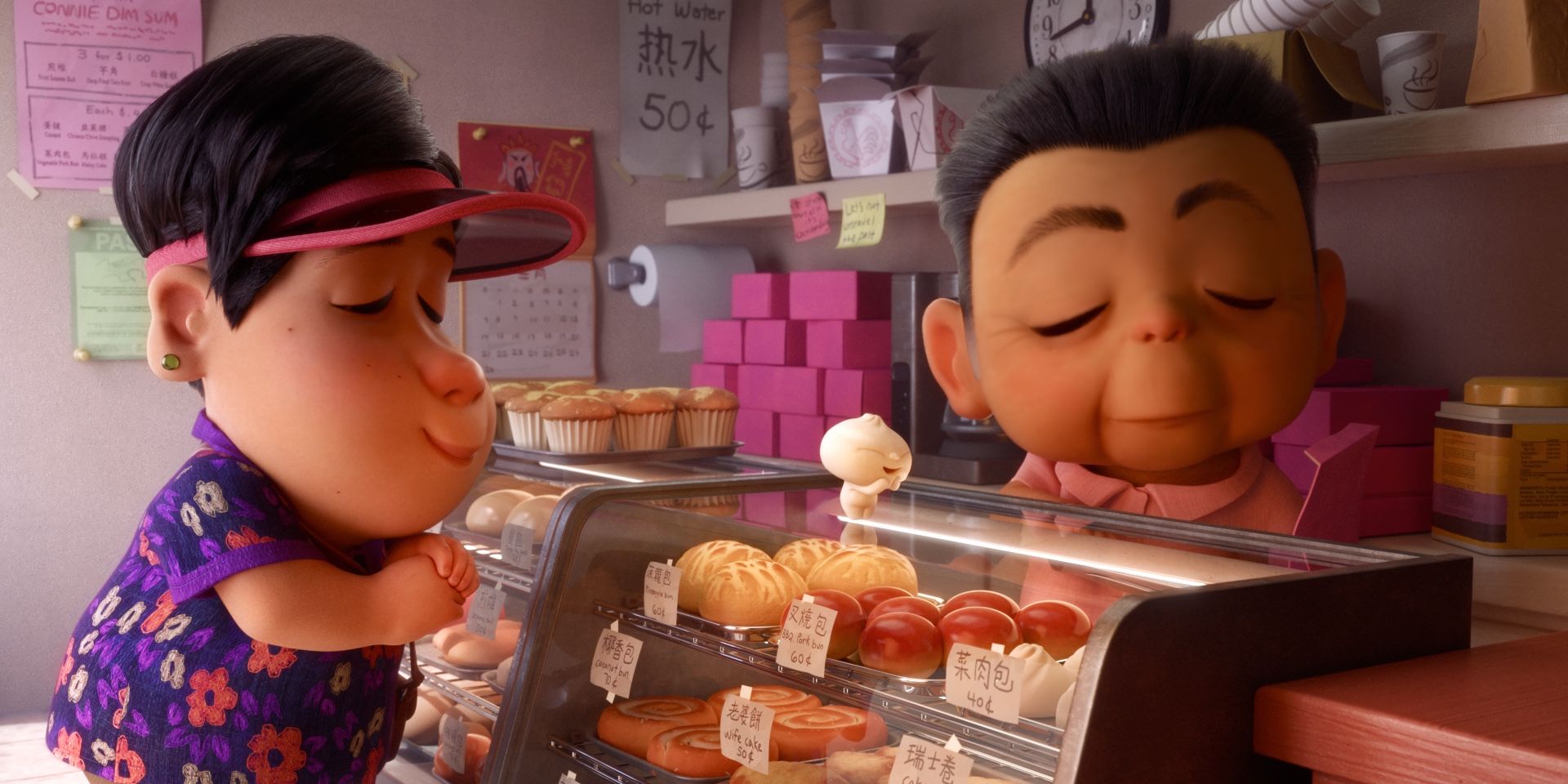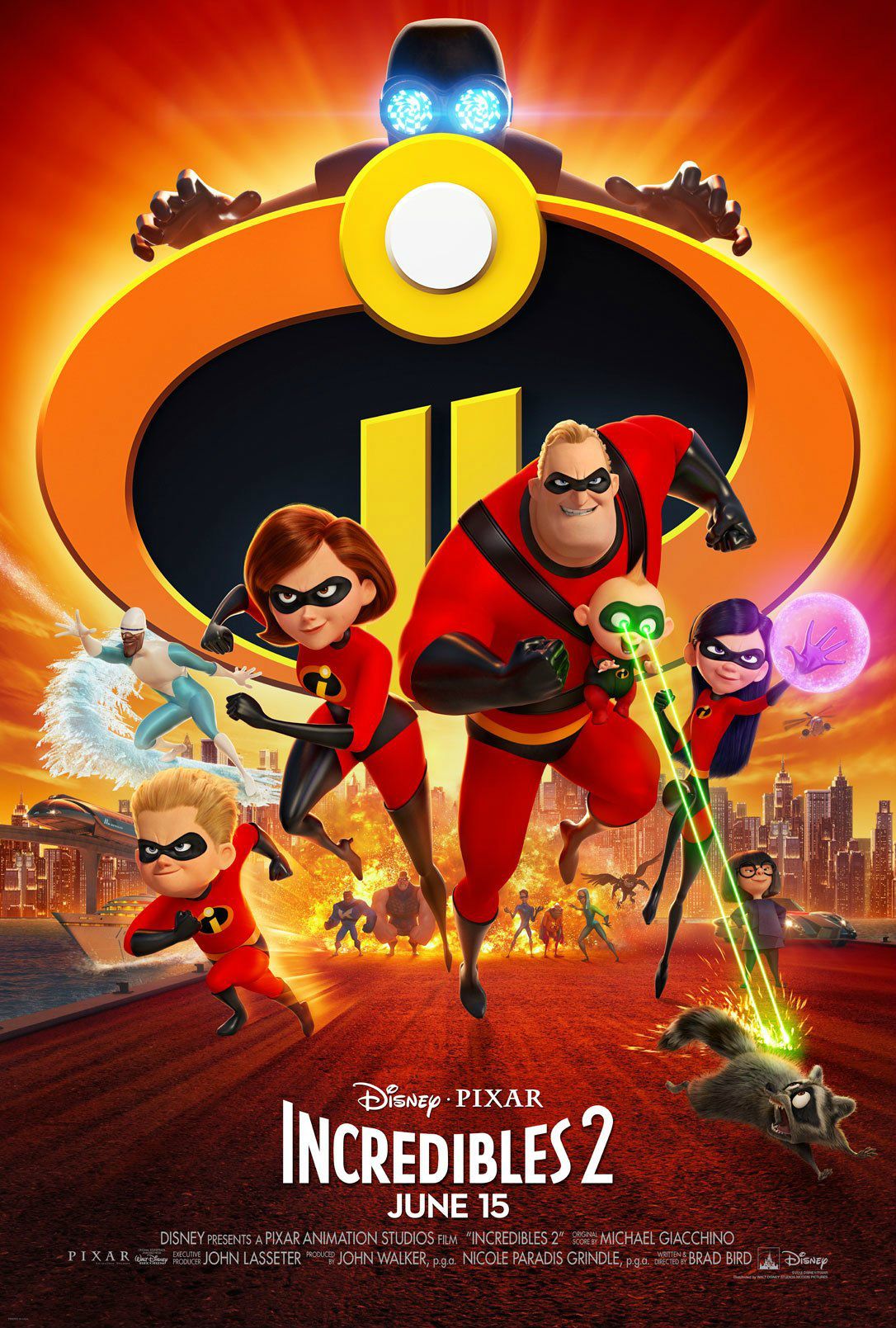Domee Shi is a Chinese Canadian artist and animator. She has worked on films such as Inside Out, The Good Dinosaur, and Incredibles 2. Recently Domee wrote and directed the animated short film Bao and became the first female director of a Pixar short. Becky Neiman is a Pixar veteran who has worked on films like Cars 2, Wall-E, Ratatouille, Inside Out, Finding Dory, and Up. Most recently, she was the producer on the short film Bao.
Screen Rant sat down with them to talk about how Domee pitched the idea for Bao, the meaning of the title, the Pixar films’ cultural diversity, the challenges they faced during production, how it feels to be the first female director on a Pixar short, what they learned during Bao’s production, their goals for the future, the family atmosphere at Pixar, and what they took away from the experience.
SR: So, I know that there was a, at least if I read, there was kind of like an open pitch idea thing. How did that come about and what was the exact pitch that you used?
Domee: Oh yeah. So, they don't do it very often at Pixar, but they happened to, I think in 2015. It was like, they asked the whole studio, like anybody can pitch three ideas each for a short film for Pixar. And it was almost like American Idol, like different rounds. So, the first round was a bunch of directors, of the judges. It was like directors, supervisors, producers. And I came in and I had three ideas. And I had just drawn storyboards of like a basic beginning, middle, and end for each of those ideas. Bao was one of them. And the idea was pretty much the same as the final short. It was like about an empty nester Chinese mom. One of her dumplings comes to life as a little baby dumpling boy, she raises him, they go through the ups and downs of life, and then boom at the end. So, all of that was there from the very beginning. And to be honest, I had no idea if Pixar would go for an ending that like surprising, and kind of controversial. But that was the reason why they liked it so much. Because it caught them off guard and surprised them. It took them on an emotional rollercoaster and it involved a lot of people's favorite food, which was dumplings, and it was really cute, and I think those were the reasons why they chose it as the official Pixar short.
SR: And if I'm not mistaken, your mom also has a credit on the film.
Domee: Yeah! And my mom’s right there too. Yeah, she was one of the cultural consultants on this short and we brought her in twice to do dumpling making classes. I really wanted the animators and the effects artists just in there, trying to like, feel the dough and smell the pork filling and just like try to imitate her. Her technique exactly. So those opening shots of the short, like we pretty much use my mom's hands, as reference. So, like down to the very last detail.
SR: And now I know Bao has two meanings, correct?
Domee: Yes.
SR: Do you want to, just so we know, do you want to say what those two meaning are. And obviously what this means to the film.
Domee: So, said one way, “bao” means steamed bun. It's those little white steamed buns like usually filled with like barbecued pork that you get from Chinatown. And then said another way, “bao,” it means precious or like a treasure. And we thought that'd be the perfect pun, title for this short about this precious little steam bun. And actually, the official Chinese title for it is “Bao Bao Bao,” so it's like bao three times, but it actually just means baby pal.
Becky: Yeah. We just found out that we were accepted to screen in China. Which is a very, which we know we have learned is very rare or only the second short to be accepted, ever.
Domee: So yeah, I'm excited that my family can watch it.
SR: That's amazing. All right. So, with the release of Coco last year, it seems that Pixar was making an attempt to tell stories that don't shy away from ethnic or cultural identity. In fact, it seems that there's a conscious attempt to shine a positive light on different racial backgrounds recently. In Bao, there's an authenticity to the Asian perspective. How were those elements supported throughout the pre-production and production process?
Domee: Yeah. We always felt so honored and lucky that Pixar has just gotten behind this story, like completely. And they've been pretty, almost hands off. I guess because they usually they're focus is on the feature films. So, a lot of the time, they would check in with us only once every couple, like once a month or so. But really, it was me and my production designer, Rhona, who is Chinese American herself. And she was kind of in charge of the look of the short. And we made sure that all of the details felt authentic to our childhood homes, our backgrounds, our experiences. But we also brought it upon ourselves to show the whole crew as well. We would take them on trips to San Francisco and Oakland Chinatown. We would feed them food. I took them to this Szechuan restaurant in Oakland I really like because that's the food that I grew up with. And most people's mouths, their tongues burned off. But I was like, “No, this is good research. You got to feel it all. You got to sweat it out.” And I think it's been super awesome that we were able to scale those little details into this short.
SR: Pixar is really good at that because I went on a press tour with Adrian Molina, when we did Coco and we went to Oaxaca, Mexico. So, I know that Pixar does a lot of that stuff, but can you talk to me about the actual, what went into the production and how long it took. And I thought that was a really interesting thing that you talked about. How it was based on her hands making the dumplings essentially. So, how long did the production take and what were some of the challenges you faced?
Becky: So, the actual production took about a year and a half. Like Domee said she pitched the idea in 2015. From then until we started production, she really crafted those storyboards and started the look of it. And really got the story reels to this sort of perfect architectural blueprint that the crew could follow. But then we started putting together a crew. So, the whole thing took a year and a half. And the biggest challenge, which I think was also most surprising, was how hard it is to have food look right. One thing we learned is we're all experts. All human beings are experts of what good food looks like. So, if it's a little bit off, it can throw the audience. You can take the audience out of the story. So, it was critical for us to get that to be perfect. And computers don't want to. Food is just not what computers do well. Because it's so natural and organic. It changes shape. Computers are good at making like hard, shiny, symmetrical things look great. Perfect. So, we really had to push the boundaries of what these computers could do.
Domee: And it was a great collaboration between the art department and the effects department too. Because Rona would be doing reviews with the effects artists, like for the pork filling. She would be like, “Oh, it looks a little gray, maybe add more saturation, more pink colors to it, add more chunks of vegetable in there.” Because we couldn't do, just realistic pork filling. We had to make it look even better than real life. It's like food photography. So, we had to almost exaggerate the food, so it looks even better than real food.
Becky: And you'll appreciate this too. Having worked on Coco. The effects artist that had designed and worked on the marigold bridge was the same effects artist, Dave Hale that did our stir fry shot. So, it was like we were really fortunate to have the opportunity to work with some of our top effects artists in the studio. But even these food shots, I mean they're used to blowing up things and doing the fire and fireworks and marigold bridge and even these were quite challenging.
SR: Well they did a great job because after the film, no joke, I went to Chinatown and bought Chinese food. I got a craving for it. So, correct me if I'm wrong, you're the first female director for a Pixar short. Ever. That's amazing. But how do you feel about that? If you don't mind me asking, I'm curious what your mom thinks about that as well?
Domee: I feel really honored and humbled and I still can't believe it. But, what do you think Mom?
Mrs. Shi: I’m very proud of her. I also thank Pixar. To get this opportunity.
Domee: Yeah, it's been nuts. I also hope I'm the first of many female Pixar film directors, many feature film directors. I think it's about time. So, I'm really excited.
SR: Has this got you thinking about what you want to do next, feature wise, possibly?
Domee: Well, actually I am working on a potential feature. My own feature film idea right now at Pixar in development. So, I'm excited to see where that will go. I'm excited because the 90-minute story format is, it's a huge challenge. But I can try out a bunch of different things.
SR: Well, that's what I was just going to ask. Because obviously doing a 90-minute feature is a ton more challenging. Throughout this process, not even just technically, but what did you learn, even when you were developing the story, what did you learn about yourself, or about just what you want to do going forward at Pixar?
Domee: Yeah, I learned that the biggest thing I learned was I always want the audience to be reacting to something on the screen. If they're kind of just staring at the screen and information is being presented to them, then it's not working. And it's been so great because the short films, I feel like are such a great training ground for feature films in the future. And, but they're kind of like everything in a feature but just condensed. So, it was really awesome to just get to experience the whole pipeline, but in this little bite size piece. I found out that I just really like getting reactions out of people. It's been such a thrill, sitting in the theaters and listening to people laugh at jokes that you told four years ago. And you're like, “Yes, this is great, this feels so good.” Or like when they gasp or when they cry. That to me is what filmmaking is. It's getting that reaction out of people. Because that means that whatever you're working on is connecting with them. So, I want to keep doing that.
SR: Bao along with The Incredibles, they're both kind of character studies on families. And Pixar has been recognized, and I've been there once, and it feels like a family. And a campus like a think tank. I noticed with this open kind of pitch, and also with Coco, I know where the Adrian (Adrian Molina, co-director of Coco) started off somewhere else at Pixar and ended up going up. They really focused on getting their own talent to the next level. Can you guys talk to me about just the family atmosphere at Pixar?
Becky: Yeah. I was going to say, the thing that I learned as a producer of the short, is how important it is to get a group of people together that's really in sync with one another and really supportive of one another. We had one of our production managers use the analogy of an outrigger canoers or kayakers. When they're all in sync and working together it can feel effortless. But if anybody is sort of off sync it can be really, really hard. And so, we all talk about how this short really felt like one of those moments where we were all in sync. And it was really just effortless and a pleasure for all of us. It was just being able to tell such a unique, original, and yet personal, story. That is yes, culturally specific, but the themes are so universal. It was so motivating for everybody. People would join the crew and say, “I'm the dumpling, I'm the mom, I'm a girlfriend.” Anybody could. There was somebody in that cast that people could relate to, no matter what their background was. And so, everyone was just really pumped to work on it.
SR: With you specifically going through this process, was there anything that you may have thought, “Okay, we want to try to get this in there,” but it didn't quite work? Because the film's great. Was there anything that you guys both kind of wanted, like, “Oh, it would be so great if we could just include this.”
Domee: Well, if it was up to me, it’d be like a 10-minute food porn.
Becky: Those food shots would have been a lot longer.
Domee: I'd just be the stir fry shot for like five minutes. Yeah, I think the most challenging part and the most limiting part is just that seven minutes. Seven-minute time limit. You want to tell so much. And you want to include so many details about Chinese life, about this, this and this. And you want to show all these cute little gags with a dumpling. But you kind of have to limit yourself, and just be like, “Okay, what does the story need at this point?” It has to either be showing Dumpling and Mom growing closer together or showing them getting further and further apart. So those were always the tough decisions to make every shot.
Becky: Every shot, there are 114 shots in the short. And every shot was carefully choreographed and designed. And every part of the set, every piece of lighting, every piece, everything needed to tell the story, like Domee said. The lighting was part of the storyteller. There were shots that start where Mom and Dumpling are being lit by the same warm light. But then as they start to grow apart Mom’s in shadow, Dumpling is in light, so you could see they're visually being pushed further apart. Mom's costume changes throughout this short. That pattern on her shirt gets more and more vibrant and colorful as she gets happier. So, there are things going on in every single shot to help move the story along. And I think the limitation was actually quite cool. It meant we got to do a lot of stuff like this.
SR: You told a great story in that timeframe. Now, last question. If there's one takeaway from this whole experience that you can take from this, what is it?
Domee: For me is, it takes a village to, to filmmakers, to make a film. It's not all up to the director. It's a huge collaboration. And a huge effort to try to just get everybody on the same page and working towards this goal.
Becky: It's a team sport.
Domee: It's definitely a team sport.
SR: You guys are amazing. It was incredible. Thank you so much.

